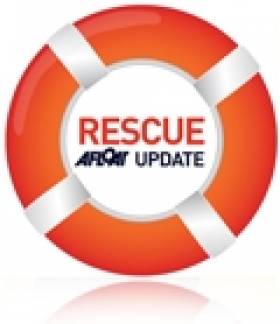Displaying items by tag: Helvic Head
Helvick Head RNLI came to the aid of four sailors on Sunday evening (15 May) after they got into difficulty and needed assistance in the Gold Coast area of Dungarvan.
With mild easterly winds and calm seas, the volunteer crew launched their inshore lifeboat at the request of the Irish Coast Guard at 6.25 pm. It followed a report from a member of the public who spotted the boaters waving from their speedboat which had broken down and was drifting with the tide.
The lifeboat helmed by Joe Foley and with crew members Alan Kelly, Simon O’Hara and Paidi Breathnach onboard, launched at 6.33 pm and made its way to the scene.
Once on scene, the crew assessed the situation and found the casualties to be safe and well. As the speedboat had sustained engine failure, a decision was made to tow it back to shore.
After bringing the group to the nearest safe port at Ballinacourty Pier, the lifeboat returned to Helvick Head station at 7.15 pm.
Speaking following the call out, Kieran Rossiter, Helvick Head RNLI Deputy Launching Authority said: ‘We would commend the member of the public who did the right thing by calling for help when they saw the sailors were in difficulty. We would remind anyone planning a trip to sea to always go prepared. Wear a lifejacket and be sure to carry a means of communication. Should you get into trouble or see someone else in difficulty, dial 999 or 112 and ask for the Coast Guard.’
Search Resumes for Missing Fishermen in West Cork
#RESCUE - The search resumed this morning for five men missing after their fishing boat went down in rough seas in West Cork early yesterday, The Irish Times reports.
One of the six-person crew of the Tit Bonhomme was rescued when he was able to reach the shore, after the boat ran aground near Adam's Rock at the mouth of Glandore Harbour.
The missing include skipper Michael Hayes from Helvic Head in Co Waterford, Dubliner Kevin Kershaw (21) and Egyptians Said Mohammed (23), Wael Mohammed (35) and Attea Ahmed Shaban (26).
Abdul Mohammed (43) was airlifted by Irish Coast Guard helicopter to Cork University Hospital, where he is in a stable condition.
As previously reported on Afloat.ie, the fishing boat was returning to its home port of Union Hall early on Sunday in strong force 7-8 southeasterly winds when the incident occurred.
Naval Service and Garda divers were scheduled to search the sunken vessel today after postponing yesterday due to poor light and big swells.
The Irish Times has more on the story HERE.
























































